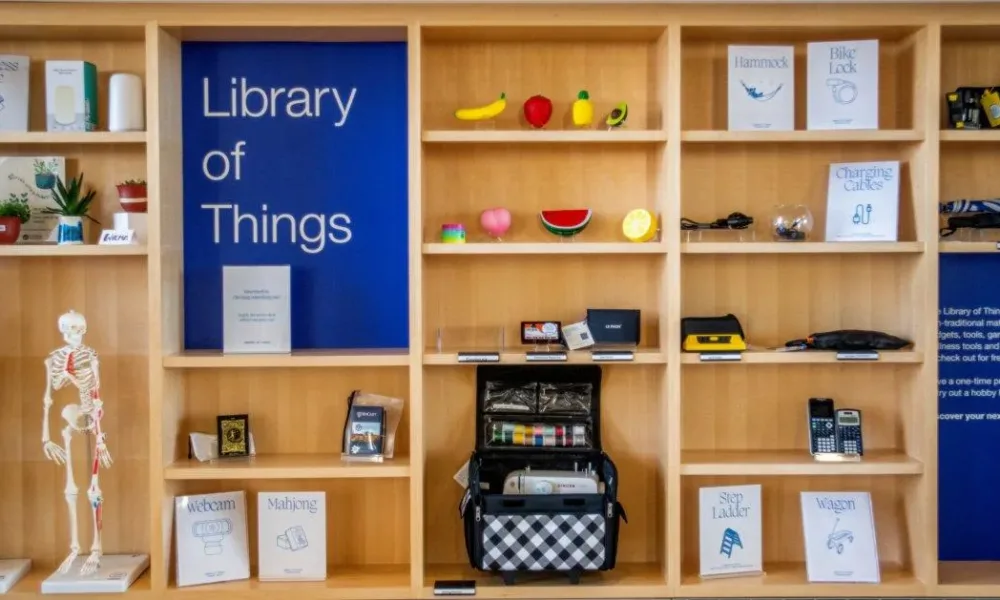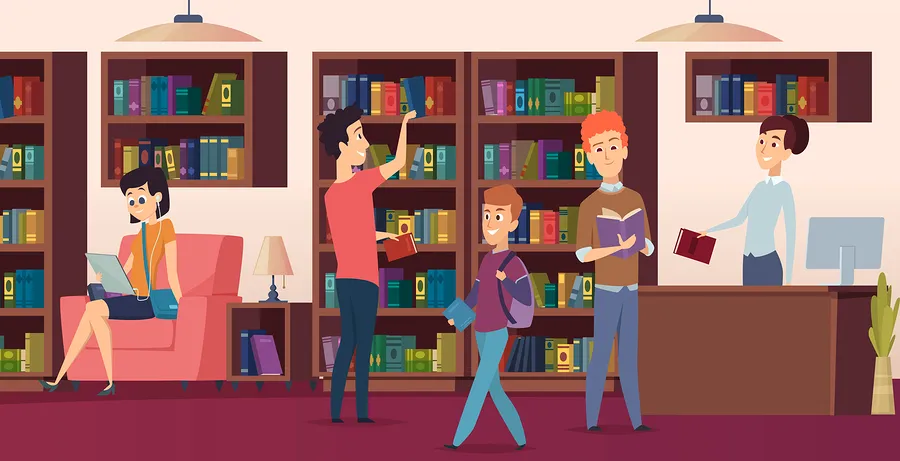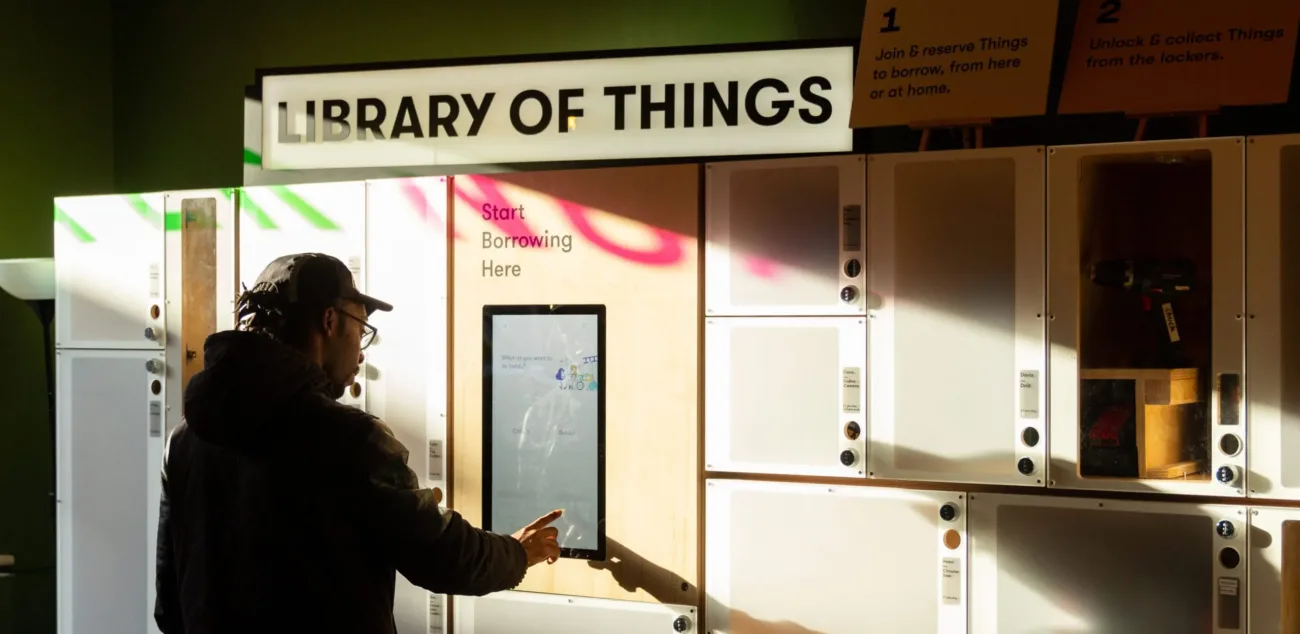Good news often begins quietly — with a conversation, a question, or a simple idea that seems small at first glance. In one town in Portugal, that spark took the shape of an unusually generous thought: What if a public library could offer more than books?
What if it could lend out the tools, instruments, and everyday items people want to try but can’t easily afford?
What if it could bring neighbors together, inspire creativity, and lighten the burden of unnecessary purchases?
This is how a charming, hopeful, and surprisingly transformative movement began: Portugal’s first “Library of Things.”
Though the idea started modestly, the impact has grown beyond anything the staff expected. Today, residents are borrowing guitars and ukuleles, learning photography through borrowed cameras, repairing their gardens with shared tools, spending family nights over board games, and delighting in the extraordinary feeling of having access without needing ownership.
In a world where communities often feel scattered, isolated, or overwhelmed by rising costs, this library’s simple gesture has become a powerful reminder that sharing is more than just a practical act — it is an expression of trust, connection, and collective care.
This article explores how the “Library of Things” came to life, how it works, why it has been so successful, and what it reveals about the human desire to share, create, and belong.
Table of contents
- The Birth of an Idea: Beyond Books, Toward Possibility
- The Grand Opening: A Community Ready to Share
- What Can You Borrow? Far More Than You’d Expect
- Why People Love It: The Power of Access Over Ownership
- Stories That Have Touched Hearts
- How the Library Manages It All
- The Ripple Effect: A More Connected, Creative Town
- The Bigger Impact: Rethinking What a Library Can Be
- A Gentle Rebellion Against Consumer Culture
- Why This Story Matters Right Now
- Voices From the Community
- Looking Ahead: Growing the Library of Things
- The Heart of the Movement: Kindness
- A Final Reflection: A Future Built on Sharing
The Birth of an Idea: Beyond Books, Toward Possibility
It all began with a staff meeting at the town’s public library — a warm, century-old building known for its reading clubs, quiet study rooms, and bustling storytelling sessions for children. The librarians had noticed a pattern: many community members were coming in not only for books but also for inspiration, advice, and access to learning opportunities.
One librarian posed a thought:
“People come here to borrow knowledge. What if they could borrow tools for that knowledge, too?”
The room grew quiet. Then curious. Then excited.
Within weeks, the team drew up a small proposal: a handful of musical instruments, a few gardening tools, a sewing kit, a board game or two. They put out a donation box. Community members eagerly dropped items in. Local shops offered discounts. A retired music teacher gave away an old, well-loved violin.
Before long, the library realized it wasn’t just collecting things — it was collecting possibility.
The Grand Opening: A Community Ready to Share
When the “Library of Things” officially opened its doors, no one anticipated the line that formed outside. Families, students, retirees, and curious visitors came with wide eyes and open minds.
A teen wanted to borrow a digital camera to learn photography before saving up for one.
A father borrowed a ukulele to surprise his daughter on her birthday.
A grandmother checked out a toolkit to repair a chair she’d been unable to fix for years.
A group of college students picked up board games for their weekly gathering.
People walked out carrying items that, weeks prior, might have felt out of reach.
The librarians — used to the quieter rhythms of book lending — found themselves giving mini-tutorials on guitar tuning, tripod setup, and even how to use a waffle maker donated by a generous bakery owner.
The energy was contagious.
The town had discovered something bigger than a new service — it had discovered a new way of being a community.
What Can You Borrow? Far More Than You’d Expect
Though the library started with a handful of items, the collection has blossomed far beyond expectations. Today, people can borrow:

Musical Instruments
- Guitars, ukuleles, violins
- Digital keyboards
- Drums and percussion kits
- Harmonicas and flutes
Creative Tools
- Cameras, tripods, microphones
- Art kits, easels, sketching sets
- Crafting supplies and knitting tools
Gardening & DIY Items
- Hedge trimmers
- Seed spreaders
- Drills, wrenches, paint sprayers
- Toolboxes for home repairs
Entertainment & Learning
- Board games, puzzles, chess sets
- Projectors for movie nights
- Binoculars for birdwatching
- Sports gear
Special Occasion Items
- Party decorations
- Cake pans shaped like castles, hearts, and animals
- Foldable chairs and picnic setups
And because donations keep coming, the collection is always growing.
The beauty lies in its diversity: items meant for curiosity, creativity, joy, learning, and helping make daily life a little easier.
Why People Love It: The Power of Access Over Ownership
The idea struck a deep chord for several reasons.
1. It Saves Money
Trying a new hobby — like photography, baking, or gardening — can be expensive. Borrowing instead of buying eliminates that barrier.
2. It Reduces Waste
Why purchase something you only need once every few months? Sharing leads to fewer unused items collecting dust and fewer things ending up in landfills.
3. It Builds Community
Borrowing, donating, and sharing create relationships. Conversations spark. Knowledge is exchanged. Neighbors become helpers instead of strangers.
4. It Encourages Learning
When the cost of trying something new is removed, people feel free to explore — to learn an instrument, test a camera, or experiment with new skills.
5. It Promotes Kindness and Trust
A community thrives when people trust each other. Lending items without charging money is a powerful expression of that trust.
Stories That Have Touched Hearts
Since the launch, many stories have emerged that reflect the heart of this project.
A Shy Teen Who Discovered Photography
One teenager borrowed a DSLR camera for a school project. Weeks later, he returned with a small photo album — landscapes, portraits, night skies. He had never believed he could be a photographer, but the library gave him access to a dream he didn’t know he could pursue.
An Elderly Man Who Repaired His Entire Garden
With borrowed trimmers, gloves, and a tool set, an elderly resident restored his neglected backyard. He said the experience made him feel “young again.”
A Family Who Created a Weekly Game Night Tradition
They borrowed three board games the first week. The next week, they came back for more — this time with friends. Now, Fridays in their home are filled with laughter, strategy, and connection.
A Local Band That Started With Borrowed Instruments
Three young musicians who had never owned proper instruments borrowed a guitar, a keyboard, and a microphone. What began as a fun experiment turned into a performing trio at the local cultural festival.
These stories illuminate a powerful truth: when resources become shared, dreams become accessible.
How the Library Manages It All
The success isn’t accidental. The library developed a thoughtful system:
- Each item is cataloged like a book.
- Borrowers receive simple instructions or tutorials.
- Items can be checked out for one week, with extensions available.
- Damaged items are repaired through volunteer skills or small community funds.
- Local experts host free mini-workshops to help people learn how to use the items safely and creatively.
The “Library of Things” works smoothly because the community doesn’t just use it — it supports it.
The Ripple Effect: A More Connected, Creative Town
Since the launch, something beautiful has happened:
the town feels more alive.
Musical notes drift from windows in the early evening.
Families gather outdoors with borrowed projectors for neighborhood movie nights.
Gardens look greener, homes feel more repaired, and creative hobbies have multiplied.
People are borrowing things — but they’re also borrowing inspiration from one another.
Local shop owners say customers often stop in to discuss projects they’re working on with borrowed tools. Teachers say students are turning in more creative assignments. Even elderly residents say the library has helped them feel more engaged with community life.
The “Library of Things” has become a catalyst for connection.
The Bigger Impact: Rethinking What a Library Can Be

This project is part of a global movement toward access-based living, but Portugal’s version stands out for one reason: it’s entirely free.
No fees.
No memberships.
No complex forms.
Just trust.
The librarians say this is intentional:
“Knowledge should be free. Creativity should be free. Access should be free.”
The success has caught the attention of nearby towns. A few are already planning to replicate the model, and discussions are underway about regional sharing networks.
This isn’t merely about lending items.
It’s about reimagining the role of public spaces as centers for creativity, sustainability, and human connection.
A Gentle Rebellion Against Consumer Culture
In a world that often encourages endless buying, this project offers an alternative:
We don’t always need to own things to enjoy them.
The “Library of Things” promotes a mindset where experiences matter more than possessions, where sharing replaces hoarding, and where community replaces isolation.
It is a quiet rebellion — gentle, practical, and deeply humane.
Why This Story Matters Right Now
At a time when many people feel strained by rising costs, environmental concerns, and digital loneliness, this story stands as a reminder that solutions don’t always require big budgets or complex systems. Sometimes, they require:
- A simple idea
- A bit of generosity
- A community willing to participate
- A belief that people will care for shared resources
The success of this project reveals something hopeful:
people want to share — they simply need spaces that make sharing possible.
Voices From the Community
“It’s more than borrowing. It makes you feel part of something.”
— A young father who borrowed gardening tools
“I didn’t know my neighbors until we started borrowing the same board games.”
— A retiree who now hosts weekly game nights
“It made me brave enough to try a new hobby without fear of wasting money.”
— A university student studying arts
“It shows what we can build when we trust each other.”
— A librarian who helped launch the project
Each voice reflects a deeper truth: community thrives where generosity lives.
Looking Ahead: Growing the Library of Things
The library has plans to:
- Add bicycles and repair kits
- Introduce a sewing and textile station
- Create a mobile “Library of Things” van for rural areas
- Build a network where items can be shared between nearby towns
- Host skill-sharing workshops taught by community members themselves
The team hopes the project will eventually become self-sustaining as more residents donate items and more volunteers offer time and expertise.
The Heart of the Movement: Kindness

Underlying every borrowed tool and every shared game is something simple: kindness.
Kindness from donors.
Kindness from librarians.
Kindness from borrowers who return items in good shape.
Kindness from neighbors who help one another use what they borrow.
This movement didn’t start because someone wanted recognition or profit.
It began because people wanted to help — and believed others would too.
That belief has been proven right.
A Final Reflection: A Future Built on Sharing
The story of Portugal’s “Library of Things” is not just about lending objects.
It is about lending possibility.
It is about rediscovering community in a world that sometimes feels disconnected.
It is about choosing cooperation over consumption, creativity over clutter, and connection over isolation.
And perhaps most importantly, it is about remembering that good news still exists — not in grand gestures, but in small ideas that blossom into beautiful movements.
One simple question — What else can a library be? — has transformed a town, strengthened relationships, sparked creativity, and offered hope.
It reminds us that when we share, everyone becomes richer.
